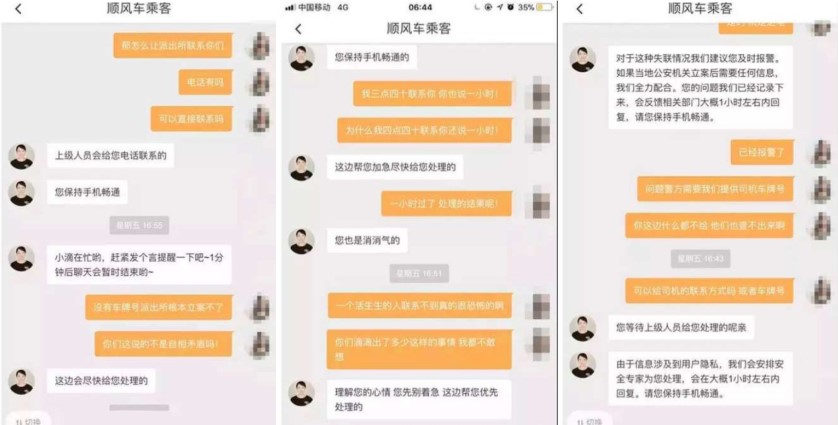If there were ever a Chinese company that merited its own historical soap opera series, it would definitely be Didi Chu Xing, the makers of an Uber-like app that came to dominate Chinese transportation. In a saga which reads like a juicy TV drama, the story of the Didi Dynasty comes complete with feuds, an underdog victory, and even — unfortunately — murder.
Didi, named after the sound of a car horn, is essentially a Chinese version of ride-hailing platform Uber. It began by offering a standard car-hailing feature, but has started to diversify its services (most recently even expanding into the bike share economy after a fall out with Ofo). Didi currently boasts over 30 million rides at a daily valuation of over 56 billion USD. Didi is also the only company in the world to receiving backing from all three of the biggest corporate giants in China: Baidu, Alipay, and Tencent (BAT) and continues to dominate and innovate not only in China’s shared economy but also in enterprise solutions, AI, and even traffic safety.
HOW DIDI BEGAN
The origin story of the Didi empire begins with the underdog Will Chen (Cheng Wei) — a student with a mediocre score on China’s College Entrance Examination (gaokao), who studied at a “second-tier” university in Beijing. After graduating, he bounced from job to job until finding himself at a lowly position within one of the palaces of Chinese business: Alibaba.
After six years of quickly moving up the ranks, he decided to branch out and found Beijing Orange Technology Company in 2012, a forerunner to what would become Didi.
Related:
Meituan: The “One-Stop Super App” That’s Hungry for ExpansionArticle Jul 04, 2018
After establishing the foundations of the company, Didi did what any great empire would do: expand and conquer in the kingdoms surrounding it. Didi first acquired Bumblebee DaChe in 2012, quickly followed by strategic alliances in the share-ride kingdoms of India (Ola ride service) Southeast Asia (Grab), and North America (Lyft). But Didi’s most notable move was when it joined forces with KuaiDi Da Che in 2015, which at the time was the other main frontrunner in China’s crowded ride-hailing sector. That merger transformed the market landscape and made Didi the clear leader in China’s ride-share market.
ENTER UBER
But just as Didi looked to have cemented a near-monopoly on the ride-share market in China, a new rival entered the arena — a storyline that has repeated itself several times over in the course of the Didi epic. Uber — a name synonymous with ride-hailing technology in much of the world — made preliminary explorations in China in 2014. After spending a reported 1 billion USD in advertising and attracting support from big-name Chinese investors such as Baidu and Guangzhou Automoblie Group, Uber quickly became a viable rival to Didi in the country.
The Didi-Uber battle officially commenced in 2015 when Uber emperor Travis Kalanick gave Will Cheng an ultimatum: Didi could either offer Uber a 40% stake in Didi or battle it out with his San Francisco-founded giant. Confident of his understanding of the Chinese market, Cheng surprised Silicon Valley by choosing battle.
Related:
What You Can Learn in the Space of a Shanghai Cab RideArticle Dec 14, 2017
A price war broke out, with both Didi and Uber offering major subsidies to customers, resulting in a frenzy of ridiculously cheap and sometimes free rides. At the height of this battle, Didi spent over 40 million RMB (around 5.8 million USD) per day to try to out-do Uber. With alliances with BAT and Apple, not to mention the advantage of being the home team (a plus which many a foreign company can attest should not be underestimated in China), Didi had the clear advantage.
Uber officially raised their white flag on August 1, 2016 in a 35 million USD deal in which Didi acquired Uber China and Uber received a 5.89% stake in Didi. This essentially led to Didi shutting down the Uber app in China as the American firm bid an embarrassing retreat.
With the home market sewn up, Didi was free to focus on overseas expansion, which it did by forming alliances with ride share platforms in Mexico, Australia, Brazil, and most recently Japan. In April, Didi launched an English version of their app, and now claims to reach over 80% of the world’s population (in more than 1,000 cities).
BEYOND RIDE-HAILING
In addition to its ride-hailing platform, Didi has invested heavily in the development of new AI technologies with the stated goal of “improving mobility efficiency and experience for users, and a building a smart mobility ecosystem”. To this end, the company has AI Labs in both California and Mainland China. The crux of Didi’s technological advancements is the optimization of ride allocation, i.e. predicting the peaks and troughs of demand in different areas. Didi boasts that it can predict the next 30 minutes of ride demand with 85% accuracy, while its “Didi Brain” is responsible for processing over 4,875 TB of data daily.
Thermal images such as those below assist drivers by predicting traffic and demand patterns, allowing them time to drive to areas of high demand nearby and essentially be ready and waiting for customers, cutting down wait times for pick-ups. Didi also uses such maps to calculate the prices of services such as shared ride offering Didi Pool by calculating the likelihood of picking up another passenger on the initial customer’s route and setting the prices accordingly.

The company has also used the data to assist local transportation authorities in optimizing their traffic light systems as part of China’s encouragement of “smart city” management programs. Didi currently helps to manage over 1,300 traffic lights in major urban centers such as Wuhan, Guangzhou, and Jinan, where the company claims its assistance has significantly helped to stymy traffic congestion and improve road safety.
With investments and a cooperation with Japanese Softbank Corporation and Apple, the company has also leveraged their great amounts of data for the development of self-automated transportation.
Related:
TechNode: Report shows bike rentals and ride-hailing are solving China’s traffic problemsArticle Jul 25, 2017
IS DIDI DANGEROUS?
Didi’s advancements in AI may help them predict with great accuracy traffic patterns and consumer demand, however there is still one thing even the best AI systems cannot fully account for: human behavior. While Didi is known in China for it’s convenience and affordability, it has also garnered a reputation as “the app female users should never use when alone or at night.”
Didi has been rocked by a series of reports involving its drivers ranging from inappropriate verbal comments to sexual assault, rape, and murder. It’s not been all one-way either, there have also been over a dozen reported cases of passengers robbing and murdering Didi drivers. While Didi has tried several times to clean up their pool of drivers and introduce stricter standards for driver verification and safety, it has largely been to no avail.
Related:
Suppression, Perseverance and Anger: #MeToo in China Gains Momentum Against the OddsArticle Jul 30, 2018
This May, a 21 year old Xianpeng Airline flight attendant was murdered by a driver when she used Didi Hitch (顺风车) to return home after a late shift. Although the driver had a history of violence and was even charged three years prior for striking and injuring a pedestrian, he still met the verification to drive for Didi Hitch, a digitalized hitchhiking service. While Didi only serves as a go-between for cars and users in Didi Hitch, many critics have argued that the app doesn’t make the assumed risk apparent enough to the user. The terse public apology issued by Didi in the wake of the incident was also seen by many as insufficient and heartless, though the company did eventually suspend Didi Hitch services temporarily and claimed to have tightened security measures.
In August however, a similar incident occurred in which a 20-year female using Didi Hitch services late at night was brutally murdered by the driver and dumped in a wooded area. This second incident rocked the company — and the country. Users were quick to criticize Didi’s apparent focus on profit over people and failure to improve safety; there was also fierce condemnation of the app’s automated complaints and comments response feature, with a friend of the murdered female sharing screenshots which showed inadequate AI replies when they raised the alarm.

In the wake of the backlash, the company issued grovelling public apologies, kicked out several executives, and announced the suspension of late night services for a week (which led in some cases to people roaming the streets in search of black cabs instead). After promising to improve the screening of its drivers, Didi also unveiled a number of safety features on its app, including an option to add emergency contact details of a friend or relative and a “one-step” (actually two-step) safety alert. It also put its “Didi Brain” to work by introducing warnings to users if a driver appeared to be deviating from the logical route of a journey.
The moves appear to have spared them further sanction from the government — for now.
DIDI’S ROAD AHEAD
At the same time as Didi is being beset by scandals and customer complaints, new rivals are emerging to challenge what was once a solid monopoly.
Earlier this week, State-owned Shanghai-headquartered car manufacturer SAIC announced that it would be launching a ride-hailing service, a move that came just weeks after Chinese firm Geely revealed they were working on their own service in cooperation with Daimler AG. They will join three more major State-owned automakers in entering the market, after FAW, Dongfeng, and Chang’an launched T3 Mobile Travel Services in July.
Others coming for Didi’s market share include food delivery and discount giant Meituan and China’s biggest travel booking site Ctrip.
Once again, Didi’s ride-sharing kingdom appears under attack. But then, the company has been here before and only emerged stronger. And as Uber’s Travis Kalanick will likely tell you, if you come at China’s ride-hailing king, you best not miss.



















